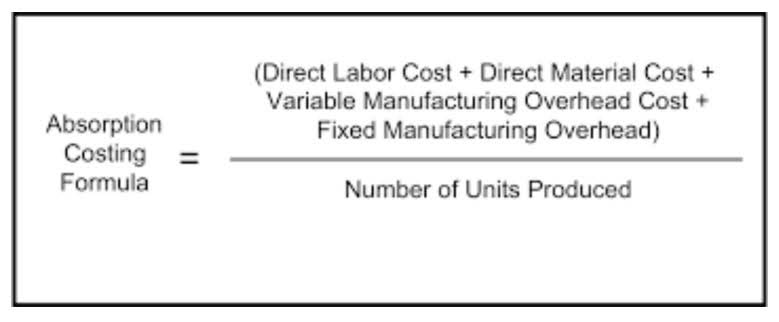Are Retained Earnings an Asset or Equity? Leave a comment

The amount of other comprehensive income is added/subtracted from the https://beeehive.teqtin.in/2022/05/02/a-guide-to-bookkeeping-skills-salaries-and-careers/ balance in the stockholders’ equity account Accumulated Other Comprehensive Income. This ratio compares the amount of cash + marketable securities + accounts receivable to the amount of current liabilities. Goodwill is a long-term (or noncurrent) asset categorized as an intangible asset. A current asset whose ending balance should report the cost of a merchandiser’s products awaiting to be sold. The inventory of a manufacturer should report the cost of its raw materials, work-in-process, and finished goods. The cost of inventory should include all costs necessary to acquire the items and to get them ready for sale.
- Overall, retained earnings include all profits or losses a company has made since the beginning.
- Common examples of liabilities include accounts payable (money the company owes to suppliers), loans, and deferred revenue.
- Retained earnings are an equity account, appearing on the balance sheet under the shareholder’s equity section.
- The average time it takes for a retailer’s or manufacturer’s inventory to turn to cash.
- An increase in retained earnings generally signifies effective profit management and a strong financial position, while a decrease may indicate lower profitability or higher dividend payouts.
- Examples of asset accounts that display on the Balance Sheet include Cash, Accounts Receivable, Prepaid Expenses, Inventory, Employee Advances, Accumulated Depreciation, Furniture, and Equipment.
Common stock
Alternatively, the company paying large dividends that exceed the other figures can also lead to the retained earnings going negative. Overall, retained earnings include all profits or losses a company has made since the beginning. Lastly, when the company has a net loss, there will be a drop in the corresponding entry. Conceptually, retained earnings simply represents any surplus of net income that has been held by the business for some future purpose. It is sometimes expressed as a percentage of total earnings, referred to as the “retention ratio”. It is important to note that the retention ratio of a business is also equal to 1 minus the dividend payout ratio.
Can total liabilities exceed total equity?

The primary components of equity include contributed capital and retained earnings. Contributed capital refers to the funds invested directly by shareholders in exchange for ownership shares, often through common stock. Retained earnings represent the cumulative net income that a company has reinvested into the business, rather than Oil And Gas Accounting paying it out as dividends.
Accumulated other comprehensive income

Liabilities (and stockholders’ equity) are generally referred to as claims to a corporation’s assets. However, the claims of the liabilities come ahead of the stockholders’ claims. The long-term asset construction in progress accumulates a company’s costs of constructing new buildings, additions, equipment, etc. Each project’s costs are accumulated separately and will be transferred to the appropriate property, plant, or equipment account when the asset is placed into service. The current asset prepaid expenses reports the amount of future expenses that the company had paid in advance and they have not yet expired (have not been used up). A quick definition of current assets is cash and assets that are expected to be converted to cash within one year of the balance sheet’s date.
Issuing additional common stock or additional bonds
They do not represent assets or cash balances that companies have kept. Usually, companies have an existing balance in this account, which changes from the transfer. Nonetheless, profits or losses will increase or decrease the retained earnings balance.
Retained earnings are calculated through taking the beginning-period retained earnings, adding to the net income (or loss), and subtracting dividend payouts. The balance between rewarding shareholders and retaining profits for growth is the kind of tightrope walk that finance professionals must master. A company’s equity reflects the value of the business, and the retained earnings balance is an important account within equity. To make informed decisions, you need to understand how slot monster casino like the balance are retained earnings a liability sheet and the income statement impact retained earnings.
For many successful corporations, the largest amount in the stockholders’ equity section of the balance sheet is retained earnings. Retained earnings is the cumulative amount of 1) its earnings minus 2) the dividends it declared from the time the corporation was formed until the balance sheet date. The amount results from the timing of when the depreciation expense is reported.

Are Retained Earnings an Asset?
With Skynova’s invoicing and accounting software, you have an easy-to-use, cost-effective solution made for small businesses like yours. Try it for free for 21 days (no credit card required), and we are sure you will join the growing ranks of business owners who have used it to help organize and run their companies more successfully. Retained earnings must be reported at the end of each is retained earnings a current liability accounting period. Comparing your retained earnings from one accounting period to the next can help provide an important metric in how your company is doing financially and serve to guide future business decisions.
This financial figure is an important part of a company’s equity, reflecting a source of financing for assets. Usually financial statements refer to the balance sheet, income statement, statement of comprehensive income, statement of cash flows, and statement of stockholders’ equity. The headings on the other four financial statements indicate a span of time (interval of time, period of time) during which the amounts occurred. For instance, the heading of a company’s income statement might indicate “For the year ended December 31, 2024”.
- Given the above information, the company’s December 31 balance sheet will report $1,500 as the current asset prepaid expenses.
- Includes non-AP obligations that are due within one year’s time or within one operating cycle for the company (whichever is longest).
- Profits generally refer to the money a company earns after subtracting all costs and expenses from its total revenues.
- An accounting method wherein revenues are recognized when cash is received and expenses are recognized when paid.
- Retained earnings is the cumulative amount of 1) its earnings minus 2) the dividends it declared from the time the corporation was formed until the balance sheet date.
The balance sheet is a very important financial statement for many reasons. It can be looked at on its own and in conjunction with other statements like the income statement and cash flow statement to get a full picture of a company’s health. Changes in balance sheet accounts are also used to calculate cash flow in the cash flow statement.

